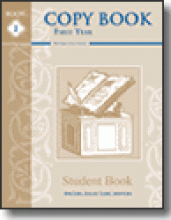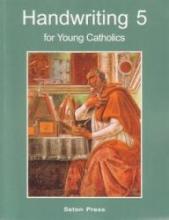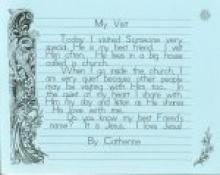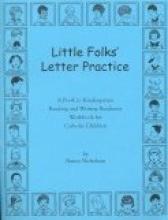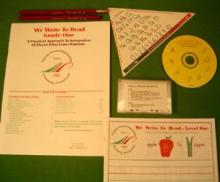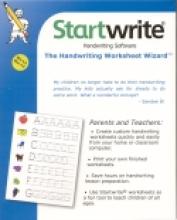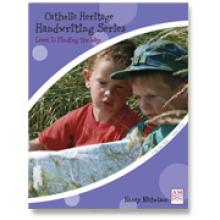Handwriting
Copybook: First Year
Memoria Press' new copybooks provide a brilliantly simple combination of handwriting practice and memory work (simple Bible verses and classic poems from authors such as Robert Louis Stevenson). The child first practices simple letters before getting into Bible passages and poetry. These lessons also include space for illustrating the verse (great for reading comprehension!). Bible passages are taken from the King James Version of the Bible. Though the King James Bible does not suffice for Catholic religious instruction, it is rightly valued for its literary qualities and contributions to the English language. The Bible passages selected, which include passages important to Catholics like "I am the Bread of Life," are completely unobjectionable.
Cursive Connections: A Traditional Style
The text is strictly black and white with no distracting illustrations. (These details are a matter of personal preference - I prefer this simpler style and others would rather have more colorful texts.) This text would be easy to use in a homeschooling situation because of the introductory information is rather complete: "the purpose of these materials", "who uses these materials", "practice methods", "expectations of the child", "correct paper position", etc. Different sorts of cursive strokes are explained as well as several examples of poorly done letters alongside "better" and "best" examples.
Individual cursive letters are given quite a bit of practice space on their own, and then practiced alongside other individual letters (particularly those which are more difficult to connect). As more and more letters are introduced, the practice begins to include short words and some phrases. After all of the lower-case cursive letters are introduced, the text moves along to Upper Case. "When should a capital letter connect to the next letter?" and when it should be left alone is also clearly explained.
This is in no way a "religious" text. However, the words God, and many Christian names (such as Xavier) are included in the word practice pages. Also, there is absolutely no offensive or "politically correct" content.
Handwriting 5 for Young Catholics
Holy Papers
This booklet provides thirty-three pages of lined paper with beautiful Catholic pen and ink illustrations. The pages are intended for handwriting practice and may be photocopied for use within your own family. Following the lined pages are approximately forty pages of beautiful religious quotes - printed in both script and cursive - for practicing handwriting. Quotes are organized according to themes such as Adoration, Conscience, Eucharist and Obedience.
Binding details: paper pad binding
Little Folk's Letter Practice
We reviewed Little Folks' Letter Practice. We found this to be very simple. For our child this was too easy for K level. It is basically for the Pre-K level. It has pages that are of coloring book quality. We photo copied the pages to make them easier to write on with a pencil. The letters of the alphabet are one to a page with a trace and write page following each letter. The pictures with each letter try to complement our faith. The introduction offers creative advice for the use of the book. The last 5 pages of the book encourage the child to sound out words. There are four or five possible words in a column. A blank has been left in front of each word, such as 'an'. Pictures to the possible word are in the right hand column to assist the child in the discovery of the word. The child will need to sound out the word in the column look at the pictures such as 'man' and write the consonant. There are no difficult words to sound out. All words are only three letters such as 'man', 'cat', 'mop', etc. This is a nice book for becoming familiar with the alphabet.
Peterson Directed Handwriting
Most of the booklets are stapled softcover, with the exception of the Preschool / Kindergarten ABC - 123 book, which is spiralbound.
Startwrite Handwriting Software
System Requirements: 16 MB Ram, 20 MB Hard Disk
This is an elegantly simple computer program that resides on your hard drive just like an ordinary word processor. It allows parents and teachers to print out handwriting pages in a variety of handwriting styles, sizes and fonts. Some of your options include:
- a center dotted line
- solid text, dotted text, dashed text or text with arrows showing the proper writing direction
- how dark you want the writing printed
- a variety of fonts including standard print, italic and cursive
- Landscape or Portrait orientation
- how large you want the text to be
Please note that the user agreement allows for use on just one computer. They do offer package deals for multiple computers. You can see more about this product at http://www.startwrite.com
CD ROM for Windows 95 & above / Mac OS 8.1 & above

